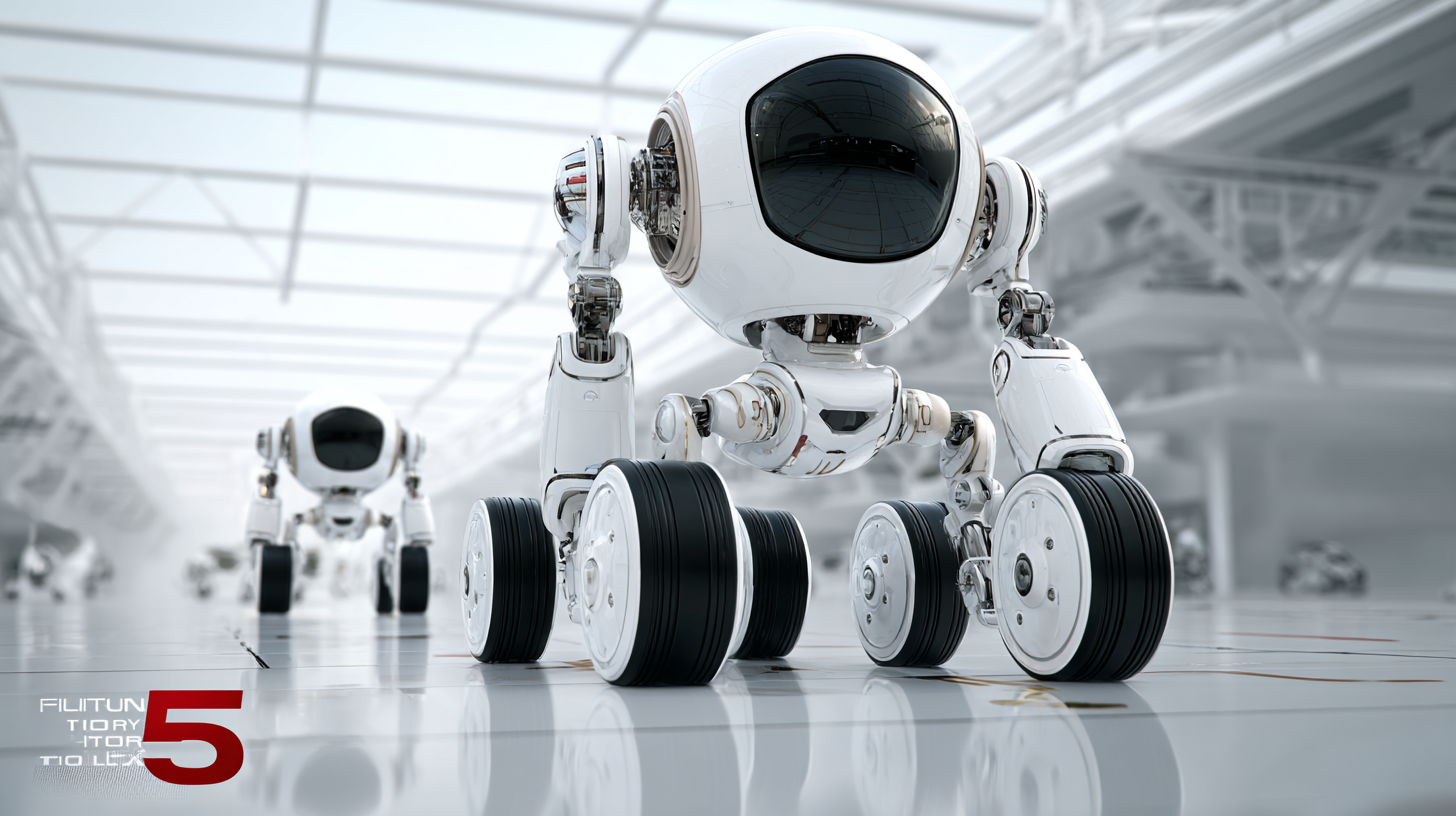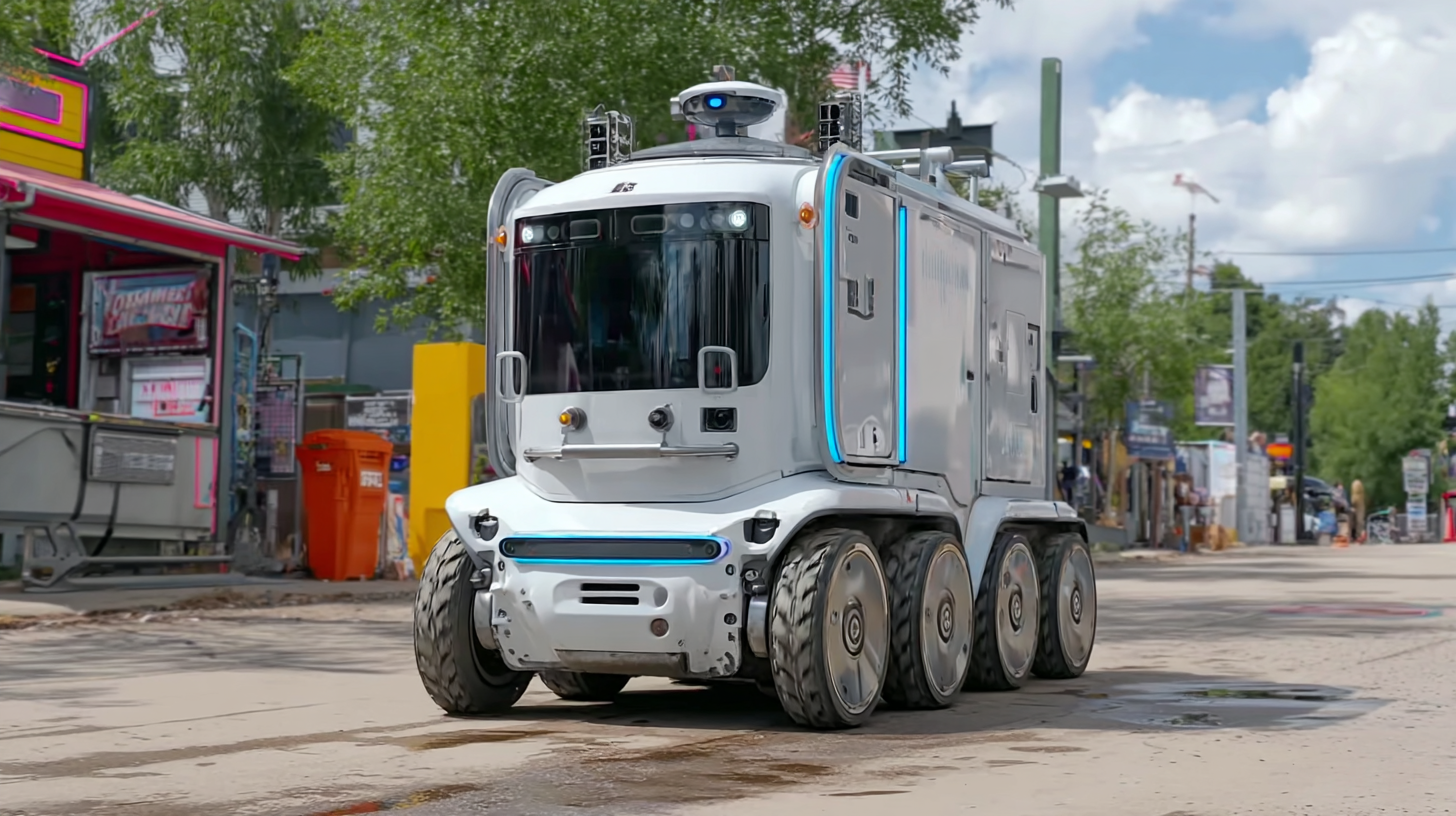

14, Raghava Enclave, Transport Road, Secunderabad, Hyderabad (500009)
©2024 All Rights Reserved by excitechrobot.com
The rapid advancement of technology has propelled the evolution of Autonomous Mobile Robots (AMRs), positioning them as critical assets in various sectors including logistics, healthcare, and manufacturing. According to a report by ResearchAndMarkets, the global market for AMRs is projected to reach $30 billion by 2025, reflecting a compound annual growth rate (CAGR) of 24%. As businesses increasingly adopt automation to enhance efficiency, these autonomous systems are becoming more sophisticated, leveraging artificial intelligence and machine learning to navigate complex environments. In 2025, we anticipate a significant transformation in the AMR landscape, driven by advancements in sensor technology, real-time data processing, and enhanced connectivity. This blog will explore the innovative technologies shaping the future of Autonomous Mobile Robots, dissecting their roles, applications, and the expected impact on industry and society.

As we approach 2025, the landscape of autonomous mobile robots (AMRs) is set to undergo transformative innovations that are reshaping industries. A recent report by Gartner projects that the market for AMRs will grow to over $10 billion by 2025, driven by advancements in artificial intelligence and machine learning algorithms. These technologies enable AMRs to navigate complex environments with unparalleled precision and adapt to real-time changes, significantly enhancing operational efficiency.
Additionally, the integration of 5G technology will play a critical role in the evolution of AMRs. According to a study by IDC, 5G is expected to support a 30% increase in connectivity efficiency for robotics applications. This leap in connectivity will facilitate faster data transfer, empower AMRs with sophisticated remote monitoring capabilities, and enable seamless coordination in autonomous fleets. With innovations in sensor technology and computer vision, AMRs will also achieve improved obstacle detection and recognition, allowing them to operate safely alongside human workers in dynamic settings, such as warehouses and manufacturing plants. These key technologies will not only redefine operational capabilities but will also lead to a safer and more efficient workplace in 2025.
This chart illustrates the projected advancements in key technologies for autonomous mobile robots by the year 2025. The data highlights the expected performance improvements in navigation systems, obstacle detection, battery efficiency, and AI integration.
The integration of artificial intelligence (AI) is pivotal in advancing the autonomy of mobile robots by 2025. According to a report by MarketsandMarkets, the global mobile robotics market is projected to reach $34.1 billion by 2025, propelled largely by advancements in AI technologies. These intelligent systems enable robots to process vast amounts of data in real time, enhancing their decision-making capabilities. For example, AI algorithms can improve path planning and obstacle avoidance, allowing autonomous robots to navigate complex environments with increased efficiency.

Furthermore, the adoption of machine learning techniques in robotic systems has transformed how these machines learn from their experiences. A study by the International Federation of Robotics projected that by 2025, approximately 60% of new mobile robots will incorporate AI-driven functionalities. This evolution will allow robots to adapt to new tasks and environments dynamically, making them more versatile in applications ranging from warehouse automation to healthcare settings. AI not only enhances operational efficiency but also extends the functionality of robots by enabling them to learn and evolve in ways that were previously unimaginable.
As we look towards 2025, the landscape of autonomous mobile robots (AMRs) is evolving rapidly across various industries. From logistics and manufacturing to healthcare and agriculture, these robots are being integrated to enhance efficiency and automate routine tasks. In the logistics sector, for example, AMRs are revolutionizing warehouse operations by streamlining the picking and packing processes. With the ability to navigate complex environments, they not only reduce human labor but also minimize errors, leading to faster order fulfillment.
**Tip:** Businesses looking to implement AMRs should start with a pilot program to assess the technology's effectiveness in their unique environment. This allows companies to evaluate the robots' performance and make necessary adjustments before a full-scale deployment.
In healthcare, autonomous mobile robots are making inroads by assisting with the delivery of medications and supplies within hospitals, thereby allowing medical staff to focus more on patient care. In agriculture, AMRs are being utilized for tasks such as crop monitoring and automated harvesting, optimizing resource usage and increasing yields.
**Tip:** For industries considering AMR integration, it’s essential to ensure that the workforce is adequately trained to work alongside these technologies, fostering a collaborative environment that enhances overall productivity.

The deployment of Autonomous Mobile Robots (AMRs) by 2025 presents significant challenges, primarily driven by technological, regulatory, and operational hurdles. One major challenge is the integration of advanced navigation and perception systems. While AI and machine learning continuously improve, AMRs must efficiently process real-time data and adapt to dynamic environments. Robust sensor fusion is critical to ensure accurate localization and obstacle avoidance, which are essential for safe operation in complex settings like warehouses and hospitals.
Additionally, regulatory compliance poses a unique challenge for AMR deployment. As these robots operate in shared spaces with humans, they must adhere to safety standards and guidelines that can vary widely by region and industry. This creates a need for manufacturers to stay updated on regulations and evolve their designs accordingly.
Furthermore, fostering acceptance among the workforce is crucial; this involves addressing fears of job displacement and demonstrating how AMRs can enhance productivity rather than replace human jobs. By focusing on these challenges and developing effective solutions, the future landscape of AMRs in 2025 can steer towards a more collaborative and efficient operational environment.
The autonomous mobile robot (AMR) market is poised for substantial growth by 2025, reflecting the increasing demand for automation across various industries. With advancements in artificial intelligence and machine learning, these robots are expected to enhance operational efficiency and reduce labor costs. The integration of AMRs into supply chains, particularly in warehousing and logistics, will streamline processes, ultimately benefiting global trade.
In parallel, several additional markets are witnessing significant trends. The Chinese skincare market, for example, is projected to expand from $64.23 billion in 2025 to $128.61 billion by 2032, at a robust CAGR of 10.43%. Similarly, the global fatty acids market is anticipated to grow from $33.7 billion in 2025 to $51.2 billion by 2034, with a CAGR of 4.7%. As consumer preferences evolve and more sectors embrace digitalization, these markets will likely adapt to meet rising demands while exploring innovative product offerings.
The convergence of technological advancements with changing consumer behaviors signals a transformative period for various industries in 2025. As companies pivot towards automation and online commerce, the landscape will continue to evolve, presenting new challenges and opportunities alike. With a keen eye on market dynamics, stakeholders can position themselves to capitalize on these developments effectively.
